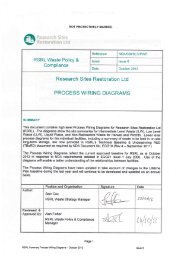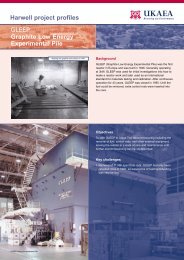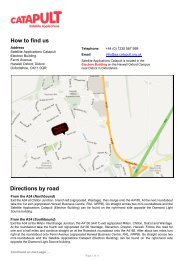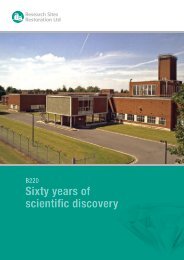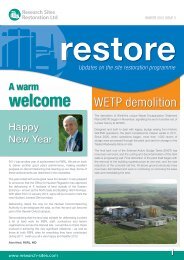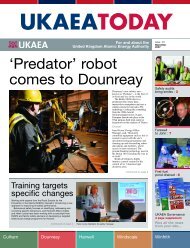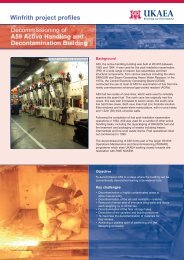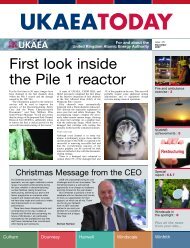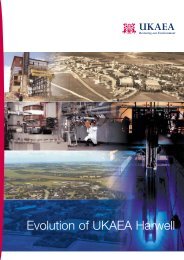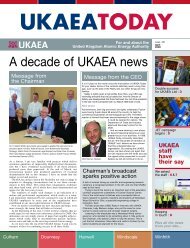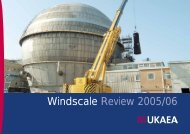RSRL Integrated Waste Strategy - Issue 5- Oct 2012.pdf
RSRL Integrated Waste Strategy - Issue 5- Oct 2012.pdf
RSRL Integrated Waste Strategy - Issue 5- Oct 2012.pdf
You also want an ePaper? Increase the reach of your titles
YUMPU automatically turns print PDFs into web optimized ePapers that Google loves.
NOT PROTECTIVELY MARKED(WSSG). The <strong>RSRL</strong> Regulatory Forum is attended by representatives of NDA, ONR, EA,local councils and local government.166. The Stakeholder Groups consist of interested parties such as tenants of the Harwell andWinfrith sites, local government representatives and regulators and have an independentChairman. Topics of interest to stakeholders are tabled at these groups and include thereporting of environmental discharges and disposals from the sites. Attendees from thelocal Stakeholder Groups also attend the NDA National Stakeholder Group Meeting.167. The strategy for stakeholder engagement is justified by the achievement of a goodworking relationship with many internal and external stakeholders. Stakeholders range frompeople or groups with a detailed interest or general interest; who are internal or external tothe organisation and who have a large or small influence on the project. Stakeholders withan interest in waste strategy at <strong>RSRL</strong> sites include:• <strong>RSRL</strong> staff• Regulators, such as ONR, EA and DECC• NDA• Local government representatives• Tenants on the site• Neighbours of the site• Local Stakeholder Group• Other NDA sites• Third party waste disposal and processing facilities168. Stakeholder engagement on the formulation of the IWS and specific waste issues islargely achieved through the public participation process that forms a major part of theBPEO process, see section 4.1. A site waste BPEO study with consultation of internal andexternal stakeholders has been undertaken at both Harwell and Winfrith. Stakeholders wereinvited to comment on the BPEO process including the technical objectives, constraints,risks, attributes, options, assessments and results. Comments have been reviewed and,where appropriate, fed into the output from the BPEO study. The study covers all theradioactive, non-radioactive, solid, liquid and gaseous wastes currently identified as being inexistence or due to arise on the relevant site. Where some of the waste streams alreadyhave mature strategies currently being implemented or have been the subject of a separateBPEO study, these are simply listed in the site waste BPEO studies, rather than duplicatingwork already completed.169. Since the BPEO study options for processing and storage of NM at Sellafield havebecome more technically feasible. A BAT assessment including several options in additionto those considered in the BPEO study has been carried out to underpin the NM transfersprogramme. A summary of the changes to the preferred option for the NM stream as aresult of the BAT assessment will be shared with local stakeholders.170. Stakeholder engagement on specific waste management issues which do not warrant aBPEO-type study is planned both internally and externally. Internal stakeholders areconsulted through formal strategy and progress meetings and via the <strong>RSRL</strong> intranet. Whereappropriate, external stakeholders are consulted on particular waste issues, such astransfers off and on site, through the local Stakeholder Groups and the EnvironmentalRegulators Review meeting.171. In order for stakeholder engagement to be effective, targeted and proportionate, it isimportant that stakeholders are not flooded with information and requests for involvementand reaction to waste management issues. Thus prioritisation of the number and level of<strong>RSRL</strong> IWS (<strong>Issue</strong> 5 – <strong>Oct</strong>ober 2012)50




